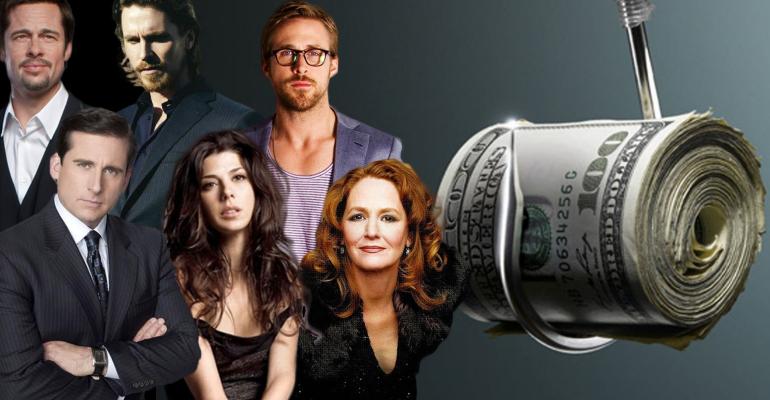Whether you catch The Big Short on the big screen or pick up a copy of the Michael Lewis book by the same name, this is a story that hits pretty close to home for the commercial real estate industry.
The Big Short offers a behind-the-curtain peek at one of the worst economic crises in history. In the movie version, a handful of investors—either through incredible insight or complete happenstance—stumble into an early prediction of the housing market collapse. They make a big stakes gamble that residential mortgage backed securities (RMBS) backed by subprime loans will crash and burn and end up making billions by shorting the market.
The movie describes “boring old banking” as mutating into a monstrosity that collapsed the world economy. Given the fact that some markets are still in recovery mode more than eight years later, you can’t really argue with the devastating effects from that powerful combination of greed, stupidity, lack of oversight and outright fraud. And there is plenty of blame to go around, with Wall Street, the SEC, subprime lenders and the ratings agencies all playing a role in what Michael Lewis refers to as a massive Ponzi scheme.
As the movie delves into the high stakes gambles investors were making on high-risk and generally opaque financial structures such as RMBS and collateralized debt obligations (CDOs) it is fitting that the story line takes a bit of a side trip from Wall Street to Las Vegas, which ended up as one of the markets worst hit by the resulting crash. Using Selena Gomez and a black jack table in the movie to explain not only CDOs, but also synthetic CDOs to a movie audience in less than 60 seconds was a nice touch. It was almost as good as chef Anthony Bourdain describing how unsold RMBS bonds were repackaged and sold as CDOs in much the same way three-day old fish is disguised in fish stew.
Some might look at The Big Short as a manual on how to beat the odds on Wall Street and get rich quick. But the bigger picture here for commercial real estate is what fall-out is the industry still dealing with, what have been some of the lessons learned and are we doomed to repeat some of the past mistakes?
One of the common mantras that was repeated over and over after the financial crisis and the meltdown in residential mortgage securities is that commercial mortgage backed securities (CMBS) were inadvertently hit by collateral damage and “painted with the same brush” as residential-backed bonds. That is very true. The collapse in RMBS nearly killed CMBS along with it. And CMBS did not exactly rise above the fray. There was plenty of “stupid money” and bad commercial real estate loans with incredibly high leverage ratios and weak underlying assets that should have never been made.
It is doubtful that the CMBS market will return to its heyday of issuing upwards of $200 billion per year as it did in 2006 and 2007 anytime soon. The market has rebounded, but it is recalibrating at what may be a new normal of closer to $100 billion in annual issuance. According to the movie, one of the worst financial events in history ultimately resulted in an unprecedented bank bailout, while criminal prosecution and reforms to prevent future abuses were virtually nil. Although that hits pretty close to the mark, it is not entirely true.
The Big Short shined a spotlight on banks and lenders that were selling subprime loans almost as fast as they could write them. They were not holding the loans on their books; rather they were kicking them out quickly to be packaged and resold as RMBS with highly questionable ratings to unsuspecting investors. One change that will hit the CMBS sector in 2016 is that lenders may be required to have some skin in the game and hold a piece of those loans on their books. To some extent, the industry is still waiting for more guidance on how regulators will act on that and what impact the new rules might have on new issuance going forward.
Another notable difference is that there does seem to be more transparency on what’s included in loan pools. CMBS B-piece buyers are taking a close look at those loans, and either pricing risk or even pushing back on loan quality by kicking some bad loans out of the pools. In the financial markets, memories tend to be short, but for now at least, there continues to be more caution and prudent decision-making on behalf of lenders and investors.
Enough time has passed to take some of the sting out of watching the economic crash unfold that impacted millions of people. Yes, hindsight is 20-20. Why didn’t more people see that disaster coming—and rather than profiting from it—try to sound some alarm bells to divert it? But watching the movie was also a reminder that, in some ways, the commercial real estate market might have dodged a bullet.
The government stepped in and propped up the banks by giving them essentially free money and extra time to clean up their balance sheets. You might remember the opportunistic investors circling the banks waiting for commercial REO property to hit the market for cents on the dollar. That did happen, and it was substantial by historical standards. Yet, it was not nearly the wave of commercial property foreclosures that many had anticipated, or dare we say in the spirit of The Big Short—even hoped for. If that had been the case, it certainly could have been fodder for another Hollywood movie.

